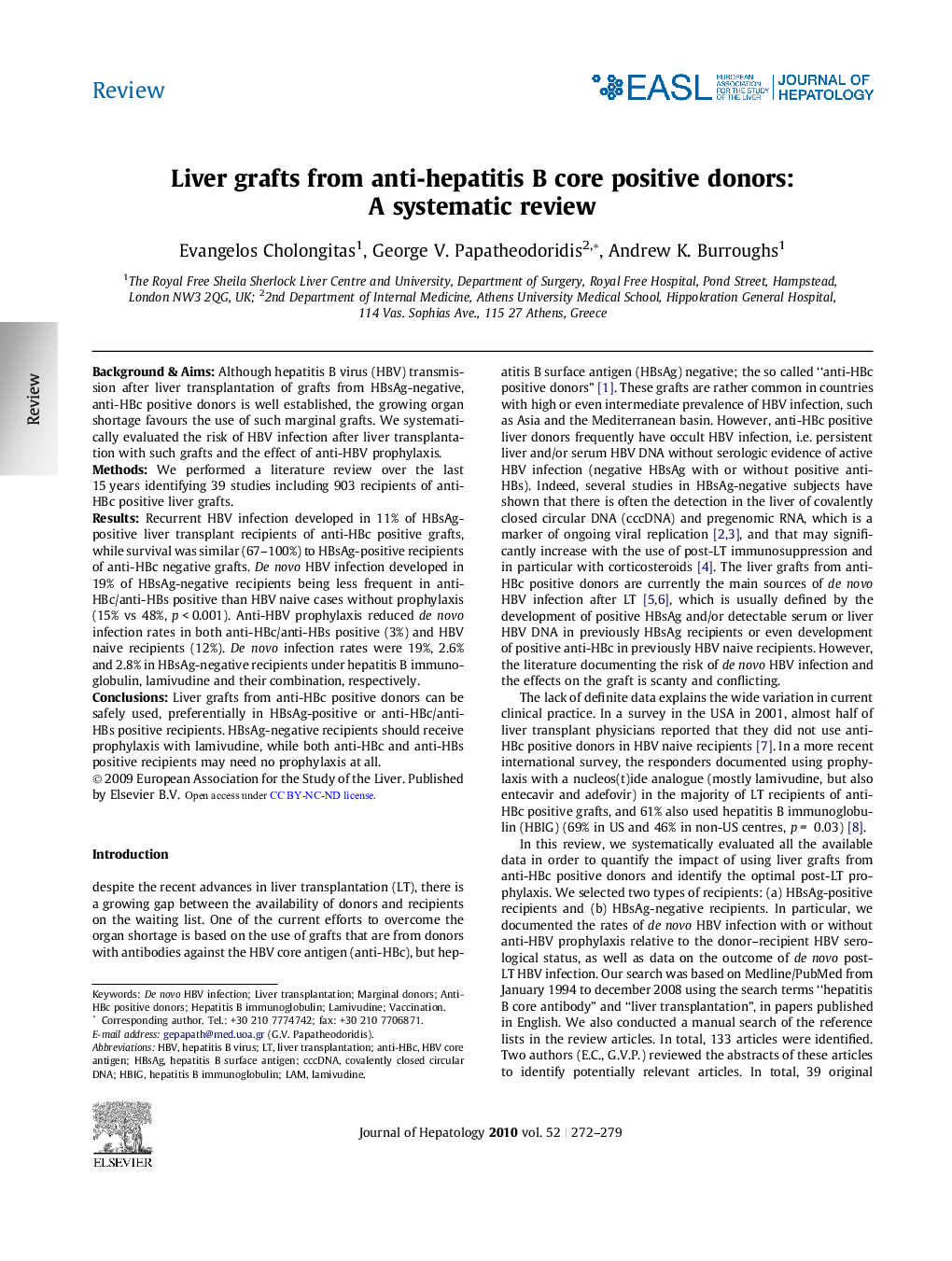| Article ID | Journal | Published Year | Pages | File Type |
|---|---|---|---|---|
| 6109803 | Journal of Hepatology | 2010 | 8 Pages |
Background & AimsAlthough hepatitis B virus (HBV) transmission after liver transplantation of grafts from HBsAg-negative, anti-HBc positive donors is well established, the growing organ shortage favours the use of such marginal grafts. We systematically evaluated the risk of HBV infection after liver transplantation with such grafts and the effect of anti-HBV prophylaxis.MethodsWe performed a literature review over the last 15 years identifying 39 studies including 903 recipients of anti-HBc positive liver grafts.ResultsRecurrent HBV infection developed in 11% of HBsAg-positive liver transplant recipients of anti-HBc positive grafts, while survival was similar (67-100%) to HBsAg-positive recipients of anti-HBc negative grafts. De novo HBV infection developed in 19% of HBsAg-negative recipients being less frequent in anti-HBc/anti-HBs positive than HBV naive cases without prophylaxis (15% vs 48%, p < 0.001). Anti-HBV prophylaxis reduced de novo infection rates in both anti-HBc/anti-HBs positive (3%) and HBV naive recipients (12%). De novo infection rates were 19%, 2.6% and 2.8% in HBsAg-negative recipients under hepatitis B immunoglobulin, lamivudine and their combination, respectively.ConclusionsLiver grafts from anti-HBc positive donors can be safely used, preferentially in HBsAg-positive or anti-HBc/anti-HBs positive recipients. HBsAg-negative recipients should receive prophylaxis with lamivudine, while both anti-HBc and anti-HBs positive recipients may need no prophylaxis at all.
